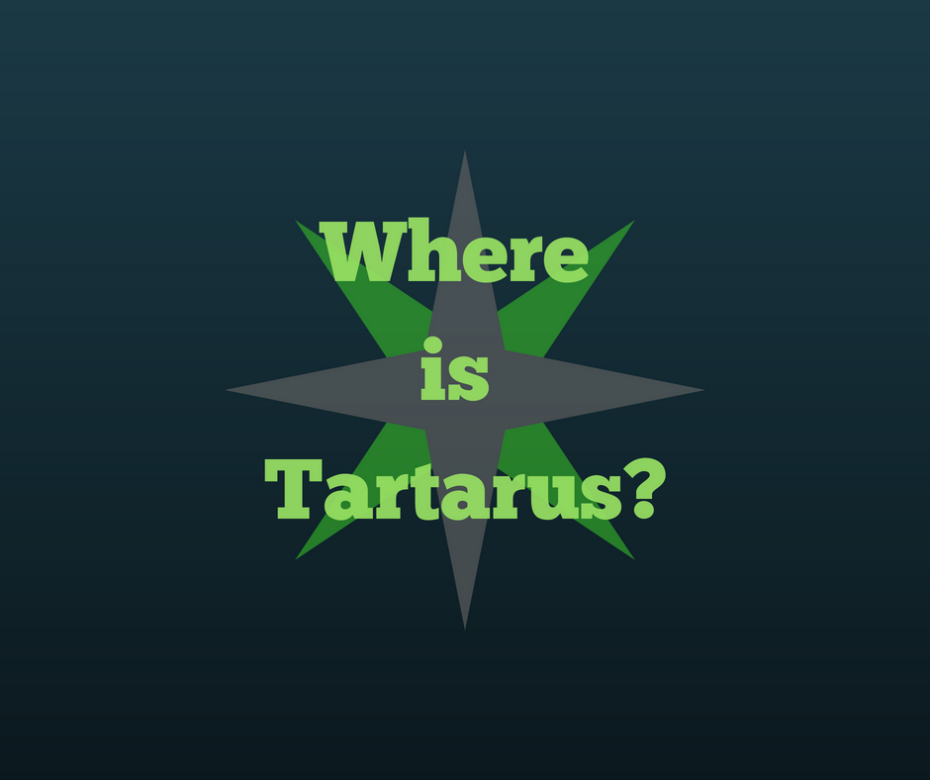The Bible is much stranger than people allow. That’s where theology can go wrong—by trying to make it less strange than it is.
I have been exploring the topic of “hell” in a series of blog posts, explaining the Biblical reasons that lead me to accept eternal conscious torment (ECT) over and against annihilationism and universalism.
In my discussions with annihilationists and universalists, I have found they tend to have a “smoothed out” view of eschatology. Most are not Dispensational. They find it too complicated. But rejecting Dispensationalism leads to a two-dimensional view of the afterlife.
For example, many (not all) universalists and annihilationists reject the idea that there is an intermediate state. And if they admit its existence, they reject the idea of different “places” within it.
As I understand the Bible, heaven and hell are not the only two “places” in the afterlife. The underworld has many different compartments. For example, according to 2 Peter, where did the fallen angels go?
For if God didn’t spare the angels who sinned but threw them down into Tartarus and delivered them to be kept in chains of darkness until judgment (2 Pet 2:4, HCSB).
Tartarus.
Wait…Tartarus?
What’s that? Where is that?
Many of your translations will say hell instead of Tartarus. That’s misleading. I think it’s an example of letting theology determine the translation. The Greek refers to Tartarus. It is the only mention of Tartarus in the Bible, but it’s not the only mention in Greek literature. On the contrary, Tartarus was well known as a place of special punishment for the very worst sinners.
For example, I’m sure you are familiar with Homer, the great Greek poet. He wrote two works, the Odyssey and the Illiad. Besides the Bible, no other works had a comparable influence on ancient Western culture. Every literate Greek and Roman would have been familiar with these books.
There is a line from the Illiad where Zeus addresses the gods and issues them a warning. He speaks about a realm as far below Hades as Hades is below the earth. The place is called Tartarus:
“I shall take and hurl him into murky Tartarus, far, far away, where is the deepest gulf beneath the earth, the gates whereof are of iron and the threshold of bronze, as far beneath Hades as heaven is above earth: then shall ye know how far the mightiest am I of all gods” (Illiad 8.17).
In the Illiad, Tartarus and Hades are two different places. And of the two, Tartarus is worse—a deeper, darker, more threatening realm, meant for the punishment of Zeus’ enemies.
This sheds light on 2 Pet 2:4. Notice who inhabits Tartarus, according to Peter:
For if God didn’t spare the angels who sinned but threw them down into Tartarus and delivered them to be kept in chains of darkness until judgment (2 Pet 2:4 HCSB).
Tartarus is not a place for men, but for the angels who rebelled against God. Their crime was especially heinous, because they should have known better, having been in God’s own presence. So they were thrown down into Tartarus, chained, and kept in darkness until the final judgment.
Jude also referred to this place:
And angels who did not keep their own domain, but abandoned their proper abode, He has kept in eternal bonds under darkness for the judgment of the great day (Jude 1:6).
Do you notice how similar this is to Peter’s description? Is there any doubt Jude is referring to the same place—Tartarus? Here again, the angels left their domain and were cast down and kept in another. Notice the “eternal bonds” which is surely the chains that Peter referred to. See how they are confined to darkness and that it lasts until the day of judgment?
As I understand it, Tartarus is a separate compartment in the underworld—the special abode of fallen angels (see Clarence Larkin, Rightly Dividing the Word of Truth, pp. 21-22, 280; R. B. Thieme, The Angelic Conflict, pp. 55-56).
How does 2 Pet 2:4 and Jude 1:6 verses support ECT over the other options? Ask yourself—which option best explains the reality of Tartarus?
Insofar as many versions of annihilationism and universalism deny there is an intermediate state, deny consciousness without a physical body, and deny any kind of existence in an underworld, Tartarus is proof positive against them.
Moreover, I believe that Tartarus is consistent with ECT because it shows that prolonged conscious torment in an afterlife is part of God’s righteous judgment. These angels have been confined (“chained”) in darkness for thousands of years and may remain for at least a thousand more (i.e., until after the Millennium) until they are cast into the Lake of Fire.
Prolonged conscious torment is what you would expect if ECT were true; not if annihilationism or universalism were true. The existence of Tartarus may be unusual and unexpected. But Biblical truth can be stranger than fiction.


